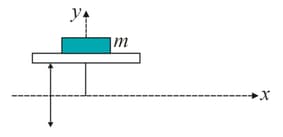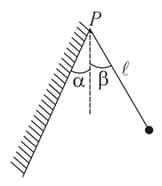Embibe Experts Solutions for Chapter: Simple Harmonic Motion, Exercise 2: Exercise - 2
Embibe Experts Physics Solutions for Exercise - Embibe Experts Solutions for Chapter: Simple Harmonic Motion, Exercise 2: Exercise - 2
Attempt the free practice questions on Chapter 19: Simple Harmonic Motion, Exercise 2: Exercise - 2 with hints and solutions to strengthen your understanding. Alpha Question Bank for Engineering: Physics solutions are prepared by Experienced Embibe Experts.
Questions from Embibe Experts Solutions for Chapter: Simple Harmonic Motion, Exercise 2: Exercise - 2 with Hints & Solutions
A particle performs simple harmonic motion at a frequency . The frequency at which its kinetic energy varies is:
A horizontal plank has a rectangular block placed on it. The plank starts oscillating vertically and simple harmonically with an amplitude of . The block just loses contact with the plank when the latter is at momentary rest. Then:
As shown in the figure a horizontal platform with a mass placed on it is executing SHM along -axis. If the amplitude of oscillation is , the minimum period of the motion for the mass not to be detached from the platform is:

For a body executing SHM with amplitude , time period , maximum velocity and phase constant zero, which of the following statements are correct for ( is displacement from mean position)?
A ball is hung vertically by a thread of length '' from a pointof an inclined wall that makes an angle with the vertical. The thread with the ball is then deviated through a small angle and set free. Assuming the wall to be perfectly elastic, the period of such pendulum is/are

If SHM is given by, , which of the following statements are true?
The position of a particle at time moving in plane is given by Then, the motion of the particle is :
Three simple harmonic motions in the same direction having the same amplitude and same time periods are superimposed. If each differs in phase from the next by , then:
